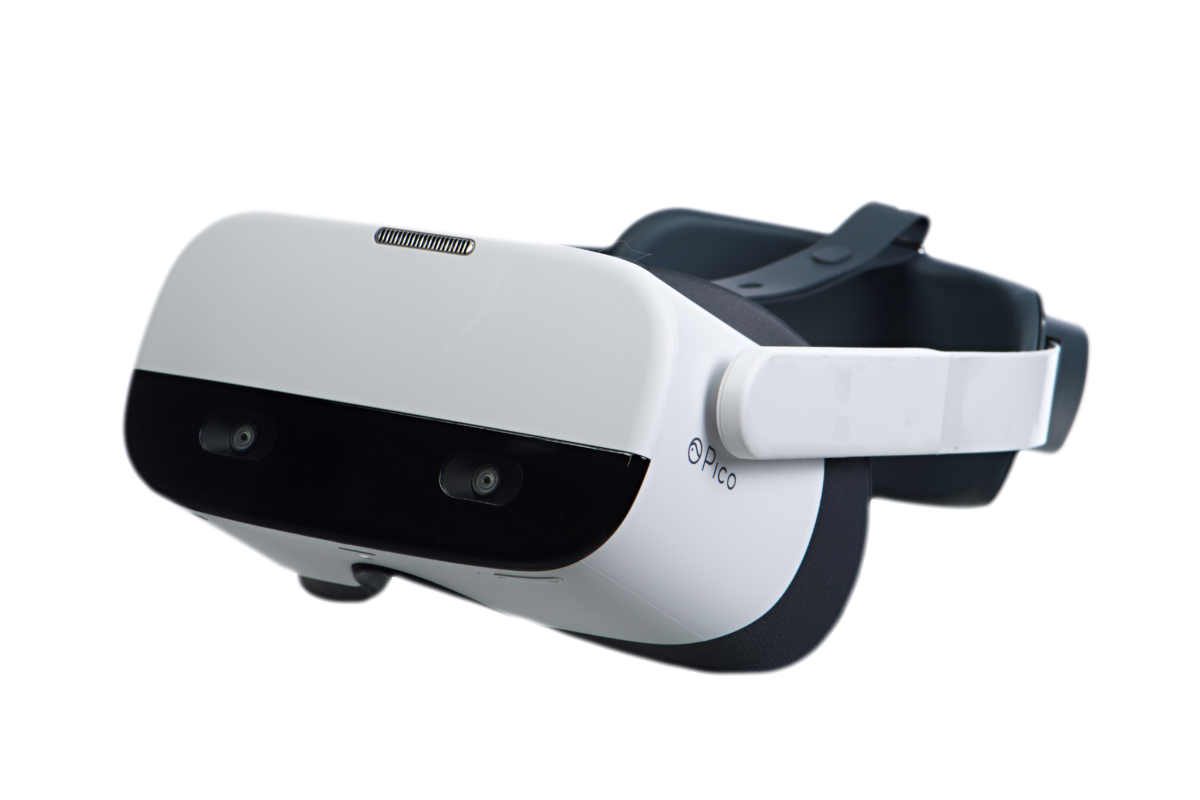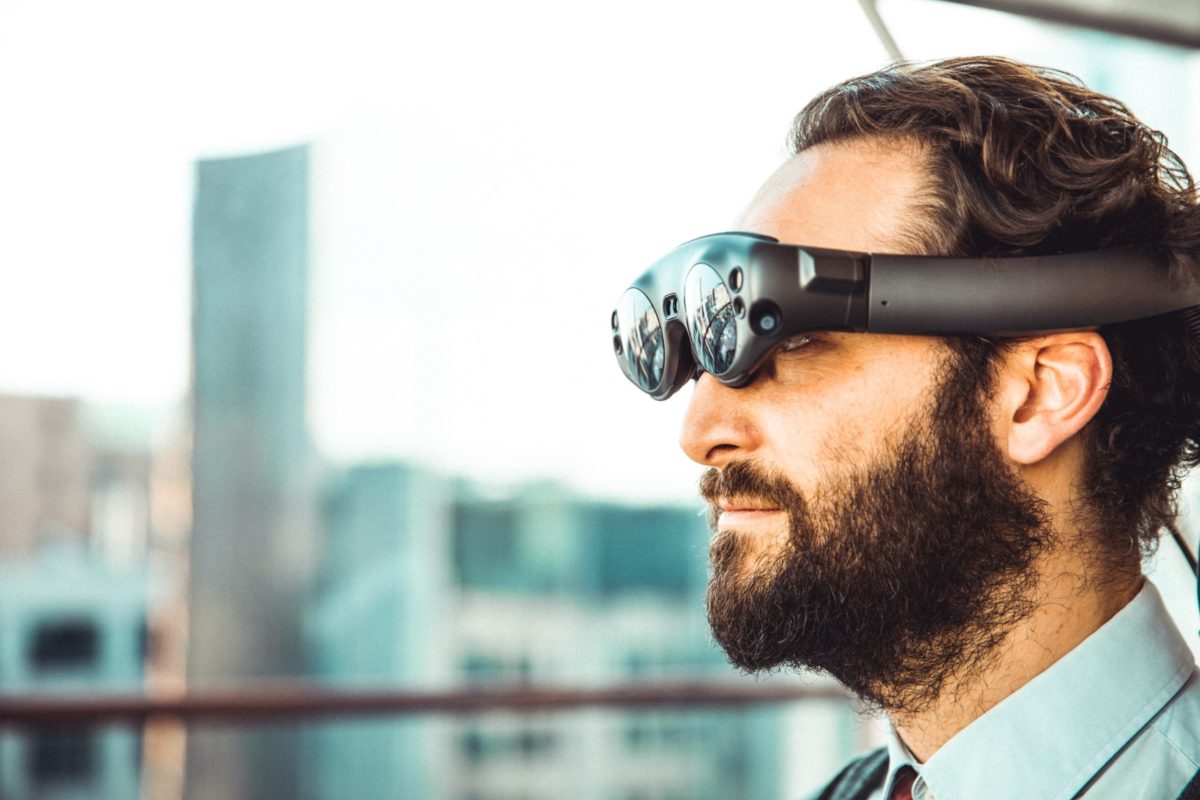As enterprises begin to adopt more Mixed Reality applications, they will need a better way to manage the enterprise distribution of this new content to improve scalability within large organizations.
Enterprises across many fields such as architecture, engineering, retail, science, and construction are adopting Mixed Reality as a cost-effective way to lower training costs, improve safety, creatively engage with consumers, and increase collaboration among teams virtually.
The Mixed Reality market in 2019 was valued at $382.6 million, with expectations to register a compound annual growth rate of 47.9% from 2020-2025.
As much traction as Mixed Reality has made in these industries and will continue to make, there are still three common problems for mixed reality enterprise distribution that are slowing down the adoption of this new technology and keeping organizations from realizing its full potential and value.
In this article, we’ll explain what Mixed Reality is, what its content management problems are, and how an all-in-one solution can solve these problems.
What is Mixed Reality Content?
Mixed Reality (MR), is the emerging combination of both Virtual Reality (VR) and Augmented Reality (AR).
MR offers users a suped-up AR experience, combining graphic overlays on top of their real, physical world, while offering the interactive features of VR — like using voice commands and gestures to navigate their hybrid world.
Creative Examples of How Enterprise is Using Mixed Reality
Healthcare and Medicine
MR offers an immersive training experience for nurses, doctors, and surgeons to practice complicated surgeries in a safe, controlled environment. Surgeons have also begun using HoloLens graphic overlays to help them find blood vessels during surgeries.
Retail and Business
Retail businesses have incorporated AR and MR practices to find new ways to engage prospective buyers. Many home improvement and furniture stores now offer apps that allow users to virtually paint their walls or place furniture throughout their home before buying. Sephora features a smart mirror on site, which lets users try out new makeup styles digitally.
Engineering and Architecture
AutoDesk, a popular 3D engineering and design software company, has started introducing MR into their CAD software. Users can quickly turn their CAD data into immersive three-dimensional spaces where collaborators can meet and navigate through their designs.
Education
Savannah College of Art and Design sent Google Cardboard headsets to its accepted students so that they could perform a virtual tour of the campus.
Grade schools have incorporated MR to allow students to explore the universe, visit the ocean floor, and take tours of the Pyramids of Giza. Immersive training experiences such as these have been shown to produce a higher information retention rate.
The 3 Problems Enterprise is Facing Distributing Mixed Reality Content
Those examples show the possibilities of using MR content, but why hasn’t enterprise been able to adapt the technology faster?
1. Lack of Content
MR is an emerging development in the Extended Reality (XR) world. While there is more VR and AR content out there, MR’s content is still catching up to the demand.
Creating custom MR content is costly. Hiring and working with software developers takes a lot of time and money.
Licensing existing MR content can be more practical than developing new software. But where do you find that content? Who makes it? And how does a licensing agreement work for several end users? It can be hard to navigate the available options in an emerging field.
2. Hardware Decisions
Choosing the right VR headset or other hardware creates a bottleneck for administrators unsure of which option they should purchase. With the huge diversity of VR headsets, smartphones, and tablets out there, it can be difficult to know what option is best suited for your content’s applications.
Will your VR headset need to be tethered, or can it be standalone? A tethered headset requires a PC connection to power its graphics and processing, while a standalone headset features a built-in computer.
Newer standalone headsets feature better graphics with PC tethering capabilities, providing the best of both worlds.
3. Implementation and Distribution
It’s not enough to have the content and the hardware. You’ll also need an efficient way of distributing the content throughout a large enterprise.
Imagine working for a multi-industry company that employs upwards of 100,000 people across the world. How do you distribute the content and set user permissions to all of the employees quickly? Without a dedicated content management system (CMS), the company’s IT department would spend too much of their time downloading and transferring this content to all employees.
Solutions for Mixed Reality Enterprise Distribution
PIXO Apex: All-in-One MR Content Management System
PIXO Apex was created to solve issues related to content, hardware compatibility, and distribution on a global scale, to maximize MR’s industry potential.
It is an all-in-one XR content distribution, management, and analytics platform. Apex was created specifically for enterprises and large organizations because of its ease of use in deploying and scaling up for multiple end users.
Content Creation and Licensing Made Easy
Using Apex, you can easily license and use PIXO’s Content Collection library filled with training titles created by PIXO and other curated content by third party companies. Your company may not need to create its own content, which will save greatly on costs. Within our library for example, PIXO has created and shared numerous safety training titles for manufacturing, utility workers, and first responders, with more experiences being added all the time.
Apex also offers a plugin for Unreal developers, which includes templates to aid in the content creation process.
Apex makes it easy for 3rd party software developers to upload their MR content for licensing to other companies.
Cross-platform Compatibility and Hardware Support
Content distributed on PIXO Apex is compatible with the most popular VR headsets available, from Oculus Quest to HTC Vive or Vive Focus Plus. Whether you’re using standalone or tethered headsets, PIXO Apex will work for your fleet.
Users can easily access their MR content using PIXO’s Hub app, which allows users to download and start running content immediately, with no side-loading needed.
Distribution and Implementation Simplified
Apex offers a cloud-based control center that allows admins to easily distribute MR content, create, and edit user profiles, manage permissions, and collect and view analytic insights. It’s easily scalable for uses ranging from small companies to large enterprises.
Downloading, distributing, and managing content across several end users has never been easier. PIXO Apex allows admins to:
Grant Access
Create and edit multiple user profiles for employees, and use authentication to securely access MR content.
Distribute
Easily send MR content to users and their devices. Automatic updates will keep your admin and IT person happy.
Manage
Create user groups and organizations within your company, extend and revoke permissions, and view analytics on custom dashboards.
Getting Started with an MR Content Management System
Are you a company admin looking to implement MR applications across your organization? Or perhaps you’re a software developer looking for a way to distribute your MR content to enterprises. Well, we’ve got you both covered with the PIXO Apex content management system.

PIXO Has Improved VR Management to One Easy Step

Photo by My name is Yanick on Unsplash
